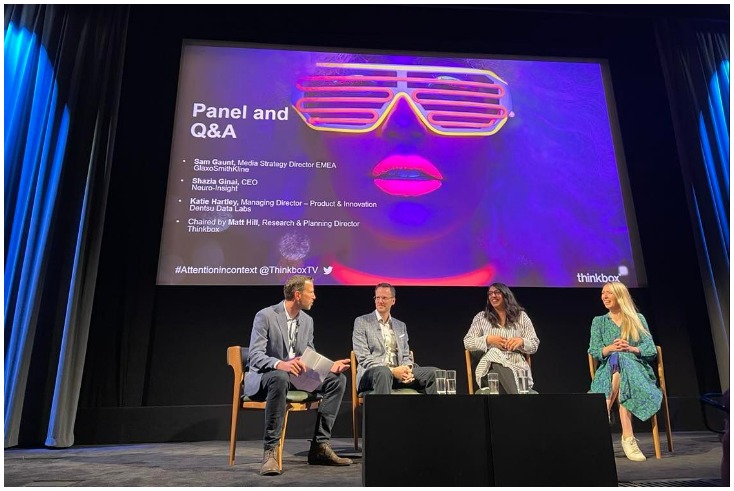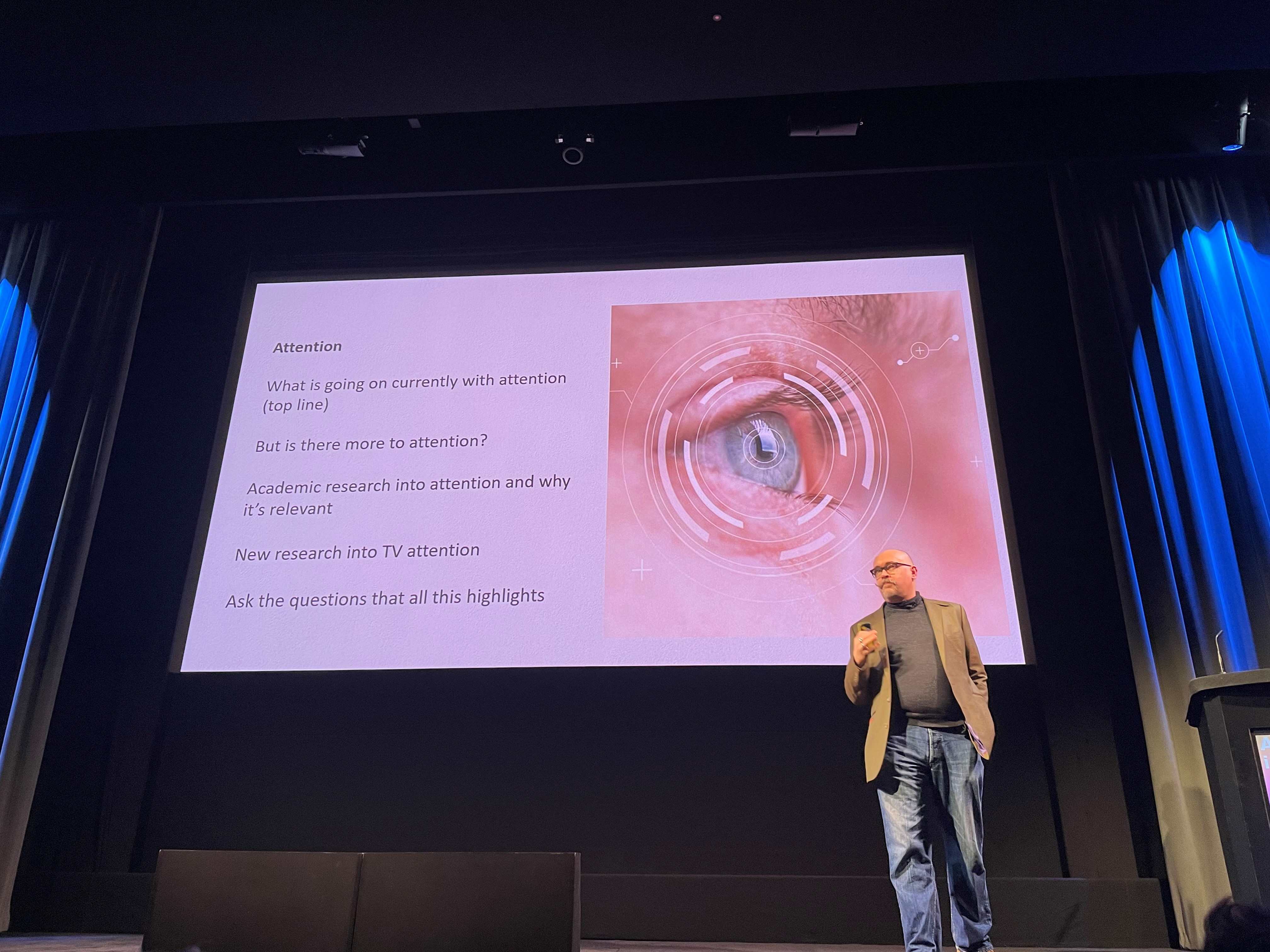Industry must not tie itself ‘in knots’ over attention

Attention is multisensory and complex, but media agencies and advertisers must not “tie themselves up in knots” over theory and measurement where it could impede progress, a panel heard last week.
At the Attention in Context conference hosted by Thinkbox, a panel with Sam Gaunt, media strategy director, EMEA at GSK, Shazia Ginai, CEO at Neuro-Insight and Katie Hartley, managing director of production and innovation at Dentsu Data Labs (pictured- main image left to right), discussed the current trends in attention and its measurement and application in advertising as well as what the future holds for brands and agencies in this area.
In the future, brands and agencies will need to understand more about how multiple types of attention work, from visual, audio, active, passive, high, low, superficial, and more, but crucially their impact on advertising’s effectiveness, was the main takeaway from the discussion.
What is the impact of attention?
The “impact” of attention for brands and advertising is linked to memory encoding, storage and retrieval in the human brain, explained Ginai, whose company Neuro-Insight measures marketing effectiveness through neuro-analytics.
“Putting too much focus on where the eyes go, as opposed to understanding what’s being encoded, means we won’t understand the impact of that attention,” she warned.
Ginai highlighted data from Neuro-Insight that found visual attention accounted for around 15% of memory encoding.
Higher levels of memory encoding are connected to better storage and retrieval of information in the brain, which in turn improve spontaneous brand recall and awareness, the main aim of most brand-building advertising campaigns.
Ginai said context and personal relevance drive memory encoding. This can be through localised out-of-home ads with “dynamic triggers” mentioning someone’s home city, adding in behavioural cues and social proofing to campaigns or digital ads using someone’s name which help “move superficial attention to impactful attention”.
She added: “One of the things that we measure is what we call engagement- quite an overused word in marketing, but what we mean by it is personal relevance. When your ears hear your name, the reason that you’re paying attention is because we know that personal relevance, when something is relevant to your brain, is a driver of your brain wanting to pay attention to it.”
More granularity in attention measurement needed across media channels
Hartley pointed out measuring attention across other media channels with the “level of granularity” there is currently in digital needs to develop further, specifically referring to the opportunities for development in TV. There is currently only attention data across broadcaster video-on-demand, programme genres, time periods like dayparts and general demographics, rather than specific programmes.
Attention data around demographics revealed that the 18-24 age group are not “attentionally harder to reach” when they are in the room and the TV set is on, Hartley revealed, adding there was only a seven percentage point difference in attention between them and the 65+ age category.
One of the reasons digital is so far ahead of other channels in terms of attention measurement is because it is advertising’s “problem child”, Ginai joked.
Hartley agreed, saying: “Digital is where we are seeing the biggest problems within attention and actually, the majority of display ads just aren’t seen, so that had to be the priority area.”
She added that the industry could start from this foundation but should avoid “tying ourselves up in knots” over the complexity of attention.
Hartley remarked Dentsu would be launching a third wave of its Attention Economy study imminently. This research programme initially launched in 2017 and its studies so far have observed 10,000 respondents across more than 300,000 ads.
She also mentioned Dentsu UK&I’s new digital advertising product with eye-tracking technology specialist Lumen Research that can predict attention paid to digital and social ads and then optimise campaigns programmatically depending on the size of an ad or player, the platform and device on which it is viewed.
While Dentsu has integrated benchmarks and norms into its planning tools, Hartley still stressed the importance of human oversight in the planning process.
Attention measurement can help with cost-effectiveness
Gaunt stressed attention is a chance for the media and advertising industry to start investing “far more effectively” in quality inventory.
When asked if there was a need to treat different channels differently in terms of attention metrics, Gaunt said: “The quality of reach in different media and I think now there is the extra nuance and the colour we can add to that is the quality of the attention that could drive in different media.
“But, on the other hand, there is value also in adopting a common approach across different media channels to look at attention as a metric and particularly the cost efficient potential because I think that’s the missing thing.”
He went on to highlight the difference between the cost-efficiency of digital and TV inventory, revealing GSK are working with a cost per 1,000 seconds of attention currently, where the typical TV currency is costs per thousand impacts.
Gaunt said this cost per thousand seconds of attention metric demonstrated TV was “incredibly cost-efficient”, while on the flip side, there were a lot of digital channels for publishers and websites that were “incredibly expensive” for the same reason.
Another point Gaunt made was avoiding measuring attention for the sake of it, and instead optimising media towards things like potential low attention and reforming media buying in the process.
Do not neglect audio attention
Dr Ali Goode, cognitive scientist and director of Gorilla in the Room, introduced the conference summing up the literature around and approaches to attention, providing food for thought on audio versus visual attention, left and right-brain thinking and the impact for brand building and activation advertising.
He pointed out you cannot “switch off your ears”, like you can with your eyes, and that use of audio through sonic branding and jingles can be particularly powerful for attention and effectiveness.




